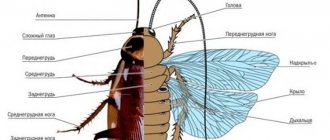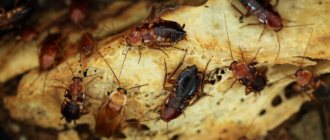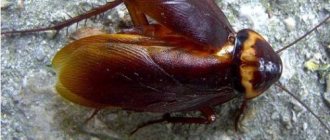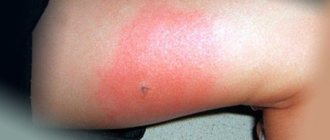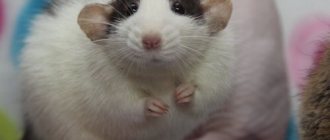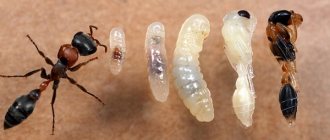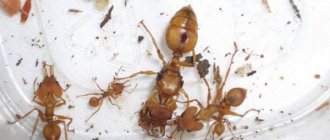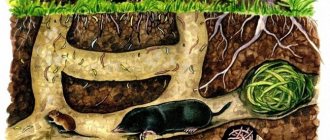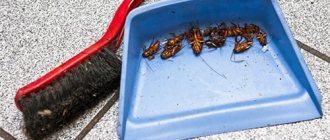Keeping Madagascar cockroaches as pets
Few people know that the cockroach is a pet.
This seems disgusting from the perspective of anyone who enjoys snuggling with soft, furry animals. However, there are people who find cockroaches attractive; the pets don't mind people petting their fragile exoskeleton. Their simple nature and ease of keeping make them suitable for those new to exotic insect care.
Their behavior
Madagascar hissing cockroaches are dark reddish-brown to black, have a heavy exoskeleton and, unlike most cockroaches, do not have wings. They are one of Madagascar's 20 species of large cockroaches, many of which are kept as exotic pets.
They hiss when disturbed, and males hiss when courting. Sometimes an entire colony will hiss in unison for reasons we don't understand.
- A 10 to 50 liter aquarium or other container that will allow a group of 5 or more cockroaches to have room to move around.
- Cover so they don't run away. Although the insects are wingless, they are quite mobile and can climb up the sides of the container.
- Paper, sawdust or wood shavings (they don’t like cedar or pine), for bedding. It must be changed periodically, especially at high humidity levels.
- Build hiding places because insects do not like light; They will be happy with simple hiding places such as toilet paper cardboard bases, pieces of egg cartons, driftwood and small cardboard boxes. Cockroaches are more likely to exhibit aggressive behavior if there is an object in the cage.
- A container filled with water. The water should be kept in a shallow dish with cotton or some other absorbent material to prevent cockroaches from drowning. They will drink from the cloth. The water must be changed every week.
- Nutrition. Hissing cockroaches should eat a variety of fresh fruits and vegetables, including leafy greens (except iceberg lettuce) combined with a high-protein kibble food such as dry dog or mouse food.
Being tropical creatures, Madagascar cockroaches like to be kept just above room temperature of 75-90℉ (24-32℃).
Debbie Clark and Donna Shanklin, Entomologists
How to make and decorate a terrarium for a red-eared turtle: drawings, description, photo
Large spiders covered with dark brown to black hairs. They have a golden-bronze sheen due to longer golden hairs that cover the entire body and especially the hind legs. Males are often more bronze in color than females.
Exotic animals are quite suitable for keeping at home. However, for their full existence it is necessary to create suitable conditions. For this purpose, terrariums are equipped.
We will tell you what requirements a terrarium must meet to keep various animals. Let's start with the turtle. At home, you can keep land turtles, as well as freshwater turtles (including red-eared turtles).
The most important mistake is keeping these animals on the floor of an apartment or house. You can organize a ground terrarium; it must have suitable characteristics. However, it is unacceptable to allow a turtle to roam around the apartment; this is harmful for the pet.
There are many species of land turtles. For home keeping, in most cases, medium-sized turtles about 20 cm are chosen. You can make a terrarium for a turtle yourself, what you need for this:
- Purchase and glue glass;
- Organize ventilation;
- Carry out UV lamps;
- Select soil.
For a small turtle of about 12 cm, a terrarium with a minimum size of 60x40x40 cm is required. But it is important to make sure that there is enough space if the turtle grows. If there are several turtles, the sizes should accordingly be twice as large.
The terrarium of land turtles should not be cluttered with various kinds of obstacles that will interfere with movement. The following soil should be placed on the bottom:
- A mixture of sand and clay;
- Hay;
- Wood chips;
- Large pebbles.
Terrarium for a land turtle
For red-eared turtles, whose size is in the range of 18-30 cm, a terrarium of 150-200 liters is required. Water should occupy 3⁄4, and land - 1⁄4.
We invite you to familiarize yourself with: Your own corner terrarium for a land turtle
Terrariums for turtles should be well ventilated. For this, two holes are made:
- The first is large, located on top of the terrarium;
- The second is small, on the front wall of the terrarium at the base of the soil.
Air temperature is a very important factor that should be properly organized in the terrarium. The turtle terrarium is equipped with a 60 W incandescent lamp, which is installed on top. Bottom heating is not recommended, as it is harmful to the animal’s kidneys. The lamp should heat one corner more strongly, here the turtle will bask and eat food (temperature about 28°C). The house is installed in a cooler corner (about 24°C).
Aquaterrarium for the red-eared turtle
Home maintenance
The reproduction and habitat of Madagascar cockroaches can occur at home. Breeding insects is very simple, even in the Russian Federation. The insectarium serves as the habitat of the house. Cockroaches do not smell, they are easy to keep and feed, and they take up little space. There is no need to walk an exotic insect either. In some cases, cockroaches are bred as food for lizards or tarantulas.
The terrarium must be equipped with:
- stone;
- snag;
- Each cockroach should have 1 liter of container volume.
For a couple of insects, you can take a small two-liter container. And for a family of 30, you will need a real aquarium of 30 liters.
Keeping and breeding Turkmen cockroaches
Insects breed in a variety of conditions, even cooler ones (with the exception of low temperatures). However, the speed of the process is significantly reduced. For this reason, the recommended conditions must be maintained at all times. Then breeding will give the desired result - new individuals will constantly appear. But the high rate of development of the Turkmen cockroach when kept at home is important only if it is used as food for insectivorous pets. Then “food” should always be in sufficient quantity.
Turkmen cockroaches Shelfordella tartara are often kept at home
Conditions
In order for insects to develop normally, the temperature is maintained from +27°C to +30°C. These are optimal conditions under which there will be no delays in the reproduction process. As a result, a regular and stable increase in the colony population is ensured.
In the insectarium, a drinking bowl is installed according to the size of one individual. Keeping Turkmen cockroaches involves periodic irrigation. If insects get enough fluid from food and drink water, such manipulations are not carried out
In addition, oothecae need to be transferred to a separate insectarium; other conditions are created for them - the level of importance should be higher so that the shell does not dry out
Home, how to set up an insectarium
The most convenient option is a glass aquarium. Moreover, the walls may not be too high, since these individuals do not crawl on glass - their limbs are not adapted for this. For the purpose of normal development and raising offspring, it is better to keep a smaller number of males. The recommended insectarium volume is 45 liters for 400-1000 individuals (which depends on the degree of human care for food insects). In practice, it has been verified that with such initial data the colony will exist normally.
There should be bedding at the bottom, and it is better to use coconut fiber for this purpose. The recommended layer thickness is 1.5 cm. Cardboard structures made of cylinders (from toilet paper) and egg cartons are installed inside the insectarium. You can also leave the branches inside. The container should not be exposed to direct sunlight, or it would be better to completely darken the insectarium.
Turkmen cockroaches feed on fruits and vegetables.
Nutrition
Considering that Turkmen pests are often used as food for other pets, it is necessary to provide them with adequate nutrition. Then a sufficient amount of vitamins and minerals will enter the cockroaches’ body. This will preserve and maintain the health of your insectivorous pet. Cockroaches need to be fed a variety of foods; they are given:
- fruits;
- vegetables;
- crackers;
- nuts (peanuts);
- greenery;
- spirulina;
- oat groats;
- roots;
- wild plants (dandelions);
- food for fish, pets (cats, dogs).
Reproduction of the Madagascar cockroach
The insect reproduces sexually. Life begins immediately after fertilization. The female carries all her offspring within herself and does not lay eggs or pupae.
Bearing offspring occurs in an unusual and original way. Fertilized eggs, glued together, form an oblong tube - an ooteca. The female carries such a capsule, a kind of apartment building, where a future cockroach develops in each compartment. It takes at least 2 months for the offspring to grow. Weather conditions and air temperature play a big role.
The female warms them inside her body, and if necessary, to “ventilate” the offspring, she simply pushes the ootheca through the anus. Once the time comes, the small cockroaches hatch into the female's body cavity. On average, the offspring number 30 young individuals (nymphs). Almost immediately they come out along with the remains of the ooteca.
While they are still “children,” the color of their shell is white, soft, and their eyes are black. Several hours will pass and the shell becomes darker and hardens. The female Madagascar cockroach shows care for the offspring, which is rarely seen in other insects. If she fears for the safety of the babies, she hisses in the hope of scaring away the danger.
The first few days after birth, the juveniles try to stay close to their mother, but as soon as they get used to it, they scatter to the sides. It is difficult for the younger generation, because they are growing disproportionately and need to shed their tight shell. About six times the cockroach will need to get out of the tight chitinous “shell”.
The seam of the shell cracks along the back and the grown nymph, pushing its halves apart, climbs out. The new body shell is quite soft, white and does not protect well from damage. But it doesn't last long. After molting, the nymph eats her old shell, and before she can handle it, her body will darken and the covering will harden.
The nymph will have its last molt approximately six months after birth. As soon as she sheds her shell for the sixth time, she enters adulthood, ready to mate and reproduce. You can determine that a “Madagascar” is about to molt by its behavior. A couple of days before the process, the insect leads a sedentary lifestyle, lethargic and tries to hide in a secluded place.
If you are able to provide normal care for cockroaches at home, then there is a chance that they will live with you for at least 5 years.
Madagascar hissing cockroach, breeding at home
Feeding insects, Cockroaches
Madagascar cockroach description:
Madagascar cockroaches are one of the most popular food items, and simply pets, for a number of reasons: ease of maintenance, large size of cockroaches, good fertility, and availability in almost all cities, they are often sold even in pet stores, which cannot be said about other large cockroaches sizes.
As you might guess, the homeland of the cockroach is the island of Madagascar, where cockroaches swarm in fallen leaves and on tree trunks in search of food. Many novice keepers of this species claim that it is necessary to create living conditions close to natural, right down to the substrate at the bottom, and a nighttime drop in temperature. Let's see if this is true.
Characteristics of the Madagascar cockroach:
Size: Females are slightly larger than males up to 7.5 centimeters, males 6.5 centimeters
Presence of wings: No, but they jump from small heights very successfully.
Lifespan: Up to 2 years or more.
Development: 1.5 years to an adult, sexually mature cockroach.
Birth: Viviparous.
Development of ootheca: 2-3 months after fertilization.
Crawling on glass: Yes.
Features: They can hiss to scare away enemies by releasing air from the breathing holes.
Contents of the Madagascar cockroach:
Many people recommend keeping Madagascar cockroaches on sawdust, or coconut substrate, or even on fallen leaves, this is possible, but with a large number of cockroaches, this is very problematic in terms of hygiene and cleaning. Therefore, it is recommended to keep Madagascar cockroaches on egg trays, like many others.
The temperature of the keeping is also not much different, from other cockroaches it is 25-29 degrees, you can additionally warm it with a lamp or other means.
Madagascar cockroaches have increased requirements for humidity: 60-70%, this can be achieved by installing a container with water or a damp substrate, or you can spray it once every few days.
An old aquarium or a plastic container with smooth walls and a tight lid may be suitable as an insectarium for Madagascar cockroaches. The planting density of cockroaches is indicated differently in different sources; you can take it at the rate of 1 liter per 1 adult cockroach.
Feeding the Madagascar cockroach:
Feeding for Madagascar cockroaches is standard, as for any others; oatmeal, bran, and succulent foods such as carrots, apples, and pears are ideal. Some resources recommend feeding them chocolate; I would refrain from such experiments.
Reproduction of the Madagascar cockroach:
Reproduction is not a complicated process; all you need is literally 2 cockroaches of different sexes and a little patience. At low temperatures the process may take longer. Males in the battle for a female can engage in fights and bite off each other’s antennae. Males differ from females, firstly, in their smaller size, and secondly, males have small horns on their heads, but females do not.
Home » Forage insects » Madagascar hissing cockroach breeding at home
Conditions of detention
Caring for the Turkmen cockroach is similar to breeding the marbled cockroach. But the situation is made easier by the fact that Turkmens do not crawl on glass, a slippery surface. Even with the lid open, no one goes anywhere in the insectarium.
Cockroaches are kept in aquariums, glass boxes, and plastic boxes. There should be small holes at the top for free air circulation.
On a note!
If you decide to keep insects in old aquariums, you should not leave the lid open for a long time. Turkmen cockroaches do not crawl on glass, but calmly move along sealant seams in the corners. Then you will have to hunt around the apartment for a long time.
Turkmen cockroaches
- humidity is about 60%; to maintain the required humidity, the walls of the insectarium are sprayed with water from a bottle several times a day,
- temperature from +24 to +30 degrees Celsius, you should definitely take into account at what temperatures cockroaches die,
- at the bottom of the box there is no special soil, sticks, twigs, special substrate, the simplest option is egg trays, as they become dirty they are replaced with others,
- Insects do not like light; they are placed in a dark room.
Shedding
Molting of a Madagascar cockroach
Madagascar cockroaches tend to shed, but they shed not their fur, but their shell. In the intervals, the nymphs grow up. The surface cover has 10 segmental armored areas, articulated with each other by softer tissue. A breakthrough forms along the back, involving the three initial segments. New, not yet formed chitin peeks through the hole. Gradually the crack grows, bending the cockroach's back. The new body thus begins to protrude outward. Then a head with black markings-eyes appears. Only at this time can you look at them carefully. Usually they are hidden. Whiskers and paws extend later.
The abdomen remains in the shell the longest. Before the last jerk, the cockroach takes a break. The hatched body looks unnaturally elongated, with rounded proportions. 30 minutes after the completion of molting, the appearance of the insect changes: the peritoneum is retracted, intersegmental folds are smoothed out, and the body is shortened. It expands and becomes flat. The entire procedure takes about 40 minutes.
After molting, cockroaches begin to eat the shed shell. Thus, they strengthen the new shell. The color changes before our eyes: first it acquires a grayish tint, then dark brown. The next day, the moulted individual is no longer different from the others.
Reproduction of Madagascar cockroaches
Cockroach reproduction differs in that the eggs are hatched inside the body. After fertilization, the laid eggs stick together and form a separate compartment - an ootheca. Throughout the entire period of egg development (50-70 days), the ootheca is located in the abdomen. Sometimes the female lets it outside for ventilation.
Ootheca of the Madagascar cockroach
The warmer the climatic conditions, the shorter the gestation period. The nymphs are released from the eggs inside the female and are immediately squeezed out along with the remains of the ooteca. Newborn cockroaches are several millimeters in length and white in color. The first hours feed on the remnants of the ootheca, gradually turning into a natural color. The female vigilantly guards her brood, preventing them from scattering and protecting them from potential danger. The female gives birth to up to 25 larvae at a time. They stay near their mother for several days, then leave their inhabited territory.
Before puberty, nymphs molt up to 5-6 times. The shell cannot increase, so it cracks as the insides grow. The old shell is squeezed out of the hole. Eating it, the insects gradually darken. Their new covering is hardening again. The duration of this period depends on environmental conditions, on average it is 6-12 months.
Possible dangers to humans
Anyone who wants to have such a bug needs to know the basics of its behavior, character and characteristics. They do not bite or attack people, but there is still one “but”, they know how to stand up for themselves. If he senses danger to his life or to his offspring, he is capable of biting only in self-defense. This does not happen suddenly, it initially warns with a hiss or whistle. If it so happens that you didn’t believe in his warning signs and a bite happened, don’t worry, nothing will happen to you. It is enough to disinfect the bite site.
Regarding infections and unpleasant smells, this can only happen through the fault of the owner. If you do not remove leftover food, do not change the bedding and water, then sooner or later rot and mold will appear, which will contribute to the development of infection. In this case, insects have nothing to do with this problem. You should not have any pets for the sake of fashion or photography.
Lifestyle
Like all insects, Madagascar hissing cockroaches are very shy. In their natural environment, in the Madagascar jungle, they are nocturnal. In daylight, they look for shelter under snags, stumps and other places where there is a woody smell. And at dusk they crawl out in order to find food.
Cockroaches are not dangerous to humans: they do not bite for no reason, do not attack and do not release poison.
Constant encroachments on the life of insects by other representatives of the fauna have developed a defensive reaction in them. At the slightest danger, they freeze in place and press themselves as tightly as possible to the ground. If you fail to stop in time and camouflage does not help, they begin to make loud hissing sounds. They were given their name for this feature. The hiss resembles that of a snake and scares away the enemy. Many animals and birds that prey on cockroaches are themselves small in size and serve as potential prey for snakes. And when they hear a sound that is dangerous to themselves, they immediately leave.
What can the Madagascar cockroach do?
At first glance, a cockroach looks quite scary even for an adult, but after meeting this funny creature, it becomes clear why they love it.
- Despite the lack of wings, the insect can jump perfectly from a small height.
- The cockroach is a good runner, so it has long been a participant in numerous races, which are considered fashionable entertainment in many countries.
- They can emit a loud hissing sound similar to a snake's. An insect does this at a time of danger, during mating or courtship. The hissing, sometimes turning into a whistle, looks quite funny.
- He has a calm character, so handling him is interesting not only for adults, but also for kids.
Lifespan
After 50-70 days, larvae appear, which are called nymphs. First of all, the nymphs eat the remains of the ooteca. This is their first food. The nymphs stay near their mother for several days, and then crawl away. Up to 40 cubs can appear in one litter, but not all survive. To become an adult, a nymph goes through 6 molts.
The life cycle of the Madagascar effervescent cockroach is long and different from most other cockroaches. Females give birth to live individuals. They carry the newborn nymphs for approximately 60 days until they emerge as first stage impons. One female can produce 30-60 nymphs.
This insect has an incomplete life cycle: eggs, nymphs, adulthood. Nymphs and adults are wingless and live from 2 to 5 years.
Behavior, nutrition, habits
They hiss when they are worried or alarmed. The sound is produced when air is forced out of the gap in the abdomen. The hissing is very loud and plays an important role in the hierarchy of colonies, courtship, and communication.
It is used to communicate with the rest of the colony, as well as to threaten and warn off predators. Males are particularly aggressive, remaining in their colonies for several months to protect them from harm.
Madagascar cockroaches are not picky eaters. They can be fed fruits and vegetables. Cockroaches even eat porridge and boiled eggs. They especially love bananas, apples and carrots. They need calcium to strengthen their shell. But feeding cockroaches with dog and cat food is not recommended. Additionally, in the terrarium you can organize a drinking bowl in the form of a sponge soaked in water, but placing a container with water is strictly prohibited. Cockroaches will definitely drown in it. There must be food in the terrarium all the time, otherwise the insects will eat each other.
How to make and decorate a terrarium for rodents and hamsters?
In most cases, rodents, including hamsters, are kept in cages. Rodents can also be kept in terrariums, providing air access.
Terrariums for hamsters can be made of plastic. They have a number of advantages over the cage:
- Firstly, sawdust does not fall out of the terrariums;
- Secondly, at night you can’t hear the hamster gnawing on the bars of the cage.
A hamster can be kept in terrariums of varying sizes; the size of the pet should be taken into account. If there is a well-equipped “home”, the pet will feel quite comfortable.
How to design a terrarium for a hamster:
- Cover the bottom with sawdust or hay;
- Place a drum or wheel, a feeder, a drinking bowl;
- It is also necessary to have dry twigs and sticks; the hamster will sharpen its teeth.
Comfortable house for a hamster
Why do people keep large insects at home?
There are two types of owners of the Madagascar cockroach, the first one keeps it as a pet, the second one keeps it as food for its pet. They often become food for spiders and lizards, parrots and crows; it is quite expensive to buy such food for your pets; it is much cheaper to breed it yourself at home.
Regarding those who keep them as pets, there is nothing strange or scary about this. Many can condemn, twist at their temples and say how crazy this idea is, and here you can argue with such people endlessly.
- The first argument in favor is that it is an exotic pet; after all, they have spiders, lizards, and snakes, then why are cockroaches so scary? They are much safer and nicer.
- The second is easy care. Not everyone can afford to walk their dog at least 2 times a day. Many people go on business trips, and then there can be no talk about pets at all, but that’s what they want.
- The third is love for animals. Where is it written that you can only love fluffy and cute animals? If a person is ready to create ideal living conditions and share his love and care, then why condemn it.
General characteristics of the Madagascar hissing cockroach.
Madagascar cockroaches are classified as tropical insects due to their natural habitat. This type of insect is more common under the name Madagascar hissing cockroach. The insects received this name due to the special hissing sound that they make under certain conditions. These conditions include the period of courtship or situations when they were disturbed.
Adults reach 9 cm in length, and usually weigh no more than 60 g. They have a durable shell, the color of which, depending on the subspecies, may vary slightly and is in shades of brown, from light brown to almost black. Madagascar cockroaches do not have wings. They can move even on very slippery surfaces. This became possible due to the pads that are located on the legs of insects. You can buy Madagascar hissing cockroaches in specialized zoological stores and salons. Not every ordinary pet supply store can afford to sell such a curiosity. The cost of these exotic insects is not high, if you look at the cost of one individual. But to equip a full-fledged colony, you need to buy about 30 insects. The relatively low price of insects is compensated by the high budget for their maintenance. The nature of insects is calm and, contrary to many misconceptions that they can be dangerous to humans, they can only cause an allergic reaction. However, it is extremely rare.Description
Madagascar hissing cockroaches (Gromphadorhina) are a genus of cockroaches that have only one original distribution area - the island of Madagascar. Around the world they are distributed only in the homes of their breeders, but not in nature. The most popular species for breeding is Gromphadorhina portentosa.
The appearance of these cockroaches is noticeably different from other “relatives” primarily in that they do not have wings at any stage, while other species lack wings only at the larval stage.
The color of the Madagascar cockroach ranges from light orange to bright brown or almost black. Its abdomen is wide, and its cephalothorax has a reliable shell. The size of an adult can reach up to 9 cm.
Males, unlike females, have “horns” - peculiar protrusions on the head, although not every subspecies of Madagascar cockroaches has them. In addition to this gender difference, there are others:
- the abdomen of females is noticeably wider,
- in females there is black color on the last 2 segments, in males - only on one,
- the antennae of females are straight and even, while in males they are curved and sometimes broken off in fights for a female,
- Also, the mustache of males is scaly, and it is they that exude pheromones to attract a female during the mating period.
Nymphs are very similar in appearance to adults, and it is difficult to distinguish them from each other. The only difference is that in nymphs it is impossible to determine the sex by external signs, and the shield on the cephalothorax is less developed than in adults.
What is the purpose of maintaining a house?
A pet is considered ideal for those who appreciate the exotic, so its unpretentious keeping is suitable for such people. First of all, it is better to get one for those who do not have an aversion to insects, but like to have fun with them. For several years, the cockroach will delight its owners.
Cockroaches do not bite and do not carry infectious diseases, so they can be safely bred by a family raising a small child. An excellent advantage is the cleanliness of the insect and the absence of odor from it. For those who love cleanliness and order, the Madagascar cockroach is more suitable than other pets that are usually kept in the house.
Lovers of dietary dishes and natural protein foods can breed cockroaches for themselves to use as food. There are special recipes for cooking insects.
How do Madagascar cockroaches reproduce?
Insects are viviparous. Pregnancy can last about two months, it depends on the temperature in the terrarium, so the necessary regime should be maintained. An ootheca (chamber) forms inside the female, where there are eggs in which larvae form. The swelling has a solid structure. At the end of pregnancy, the larvae emerge from the female’s abdomen along with swelling.
Once born, the larvae reach a length of several millimeters and are covered with a soft white shell. After a few hours, the shell darkens, and the larvae become similar to their mother. At one time, about 30 little Madagascars can be born, which will only stay next to the female for a few days, and then crawl away to the sides.
Adults do not eat small larvae, so all cockroaches can be kept together. Nymphs grow inside their chitinous shell, which, as they grow, cracks several times on the back and slides off. The crawling small individual is light at first, but quickly darkens, eating its old shell. You should know that the growing period for cockroaches ranges from six months to a year, this also depends on the quality of food. In order for them to grow faster, they need high-quality and varied food.
Sometimes you can notice that some cockroaches do not show activity, they can roll over on their backs and kick their legs. Some parts of the legs may even fall off. You can also notice that the end of the abdomen is covered with a white coating. This indicates an insect illness.
Marble cockroaches description:
Today, the marbled cockroach is one of the most popular food crops, this is facilitated by several qualities of this species such as: low cost, unpretentiousness and high fertility. For example, in 2 years, a colony of 40 cockroaches has turned into an army of thousands of destroyers of everything edible, and continues to grow.
They also owe their popularity to information that when they escape, they do not take root in the apartment. Despite this, you can also hear information to the contrary, that cockroaches breed in an apartment even better than in insectariums. I don’t think anyone wants to check it from personal experience.
The marbled cockroach is native to East Africa.
A cozy home for your pet
For Madagascar cockroaches, a plastic aquarium at home is suitable as a home. Its volume is determined from the following standards - one liter of space per individual. The presence of handles and light weight will allow the owner to take the insectarium with him. For example, to participate in exhibitions or organize long-distance moves.
The presence of ventilation holes allows you to keep adult individuals or young animals older than four months in such aquariums. Cockroaches that have just been born can be kept in ordinary jars with a volume of three to five liters. The lid will be gauze secured to the neck with an elastic band.
Drinking bowl
Cockroaches from Madagascar require constant access to water. Just don’t just put a container of water in the terrarium (like the one given to decorative rabbits) - the insects will simply drown in it, especially if there are a lot of young animals in the colony. The best solution to this problem would be a special drinking bowl, which can be easily done at home. Take a small piece of material similar to a sponge or foam rubber, place it in a shallow container and regularly moisten it with water.
Specific features, characteristic only of this type of cockroach, make it possible to distinguish it from a wide range of relatives and attract human attention. For example, a female insect is viviparous, that is, she does not lay eggs (which is what the inhabitants of average kitchens do)
The hatching larvae spread throughout the terrarium at an impressive speed. It will take them about four months to achieve external resemblance to their parents. One clutch contains from 10 to 50 larvae.
Litter
To create comfortable conditions, it is recommended to cover the bottom of the container:
- sawdust,
- shredded sheets of clean writing paper,
- coconut substrate,
- clay mixed with sand,
- small pebbles.
Small pressed sawdust, which is often used for cat litter, is also suitable. What layer height to choose is a matter of personal preference of the owner. The same applies to the presence or absence of bedding, since it does not have any effect on the health of the cockroach.
If the owner decides that his Madagascar cockroach needs bedding, he should remember not to use sawdust from coniferous trees, especially if it is cedar. The frequency of substrate change is determined by the number of individuals and cell size. As a rule, the average is once a month.
Individual "houses"
Endemic to the island of Madagascar, they are nocturnal by nature. In their homeland during the day they hide under stones and leaves. At home, cylinders that are hollow inside will serve as shelter, which can be connected to each other to form various structures. Egg cages can also be an option – breeders often use them to build small houses that increase the usable area of the cage.
Pieces of pine bark, as well as clay figurines intended for fish, provide excellent shelter.
Temperature and humidity
Comfortable temperature indicators are 25-30°C. Lower numbers make cockroaches passive and reduce the likelihood of having offspring. Humidity is also of great importance - about 65%. Spraying the walls of the terrarium with plain water several times a week helps maintain it. A regular sprayer is suitable for these purposes.
We create conditions in the house
In order for the exotic hobby to bear fruit and achieve its goal, Madagascar cockroaches are kept in conditions as close as possible to natural ones.
Choosing a terrarium
Terrarium - plastic tray. Buying it is not a problem; they are sold anywhere.
The size must be selected based on the purpose for which the insects are kept. If it’s for fun, then it’s small; if it’s a business project, then it depends on the scale.
Home climate
Since Madagascar is a tropical island, the conditions in the terrarium must be maintained similar. The temperature should be within +25… +30 °C. Insects tolerate decreases and increases in temperature normally; they do not die, but do not reproduce.
In addition, the humidity must also be kept high, as in the tropics. This is easily achieved by spraying. It’s important not to overdo it here. Excessive moisture leads to rotting of the litter, mold multiplies, and this is unacceptable.
Arrangement
Litter is a necessary condition for the existence of Madagascar cockroaches in a terrarium.
The materials used for it are:
- sawdust (except coniferous);
- coconut dust;
- a mixture of sawdust and sand.
The substrate is changed once a month to prevent the proliferation of mites, frequent companions of these exotic insects.
Previously it was believed that this unique species of blood-sucking parasites simply drinks blood, as it should. But further research showed that the mites, which no longer live with anyone, feed on the same things as cockroaches, and use their hosts as transport.
Did you know? Cockroach hissing is used in movies to soundtrack some episodes.
are also provided in the insects' home
. Amateurs don’t further elaborate and use plastic egg trays for this purpose, stacked, but not tightly.
The drinking bowl is set up simply: cotton wool is placed in some container and filled with water.
The cotton wool should be moistened generously, but not too much. Cockroaches can drown. The decor can be arranged, or not. It all depends on the tastes and goals of the owner.
Why do people keep Madagascar hissing cockroaches?
Food can be either fresh or rotten. Insects often eat the corpses of relatives. In order for the shell to be strong, the diet must include foods containing large amounts of calcium.
This is especially important for young animals and during the mating season.
A colony of 30 individuals is freely located in a terrarium measuring 20x30x40 cm. The insect has soft pads on its legs, which allows it to move freely even on a completely smooth surface. This obliges the owners to close the container with the colony tightly enough. Air access is provided through small holes.
Even if the individual manages to somehow leave the terrarium, the owner should not worry. Keeping such a specific pet at home is possible due to its calm nature, without displays of aggression. Therefore, the presence of the insect is allowed even in those families where there are small children. There is only one limitation - if someone in the household has allergies.
Male and female have some external differences
Externally, it is not difficult to distinguish individuals of the Madagascar cockroach. Nature endowed males with two raised horns located on the prothorax. Another sign is the larger size of the antennae when compared with the length of this part of the body in females.
Having such an unassuming pet at home is quite interesting. Suitable conditions and good nutrition will make the life of the insects fulfilling, and you will receive a good income by selling the excess individuals.
Madagascar cockroaches are harmless insects. They are not capable of harming a person, much less biting him. They do not emit any unpleasant odors. The hissing of insects may unnerve some people at first, but owners quickly get used to it and even begin to get bored when cockroaches are silent.
Keeping insects at home is interesting and exciting. Some owners organize exciting cockroach races. Others simply admire them, enjoying their presence in the house. The Madagascar cockroach often brings in quite a bit of income.
Structure of the Turkmen cockroach
The adult size is 2.5-3 cm. The male is larger in appearance due to his long wings, which increase his size. But he is unable to fly, and can jump and flap his wings if he senses danger. The female's wings are underdeveloped, they are in their infancy.
The sex can also be determined by its characteristic coloration. Females are dark brown with yellow spots on the abdomen. Males are not so brightly colored; a golden tint is added to the brown color. The larvae have the same color, which has nothing to do with gender. The appearance of Turkestan cockroaches can be seen in the photo.
The Turkmen cockroach is not viviparous. After mating, the female lays eggs in a special capsule - an ootheca - and carries it with her, and then buries it in the ground for the larvae to mature. After a month, 16 to 18 larvae are hatched, which molt 3-4 times before reaching sexual maturity.
The entire period from egg to imago (adult) in cockroaches averages 4 months. The lifespan of adults is short and equal to 4 months. During this period, the female manages to lay several clutches: 2 times a month.
Turkmen cockroaches are convenient for breeding, as they have a number of advantages:
- they are not able to climb smooth surfaces, so shoots are a rare occurrence,
- they do not emit unpleasant odors,
- the chitinous cover is quite soft compared to other species,
- unpretentious,
- multiply exponentially.
Note: In the wild, their habitat is quite wide. It covers the territories of Turkmenistan and Uzbekistan, Saudi Arabia, Iraq and Iran. Individuals of this species are also found in African spaces: they live in Egypt and Sudan. They usually live “next door” to a person.
Reproduction
The Madagascar reproduces by viviparity. After fertilization, the female bears future offspring in a special chamber - the ooteca. Egg development lasts for 50-70 days, depending on air temperature. The colder the climatic conditions, the longer the female will carry the so-called pregnancy.
The nymphs leave the eggs while still in the female’s body cavity, and then come out along with the ooteca. The larvae eat the ootheca within a few hours and quickly change their original white color to dark. As a rule, one cockroach brood contains about 25 larvae. After birth, they stay near the mother for 3-4 days, after which they spread out in different directions.
Madagascar breeds by viviparity
During the period of maturation, the nymph molts several times. The chitinous cover does not grow with it. When the time comes, the shell splits on the back, then moves apart, and a grown nymph emerges from it. Its new shell is light and soft, but during the period during which the nymph eats its previous shell, the new shell becomes hard and the insect acquires its normal color.
The duration of the developmental stage from birth to the last molt is directly dependent on external conditions, nutrition and varies from 6 months to 1 year. During all this time, the nymph molts 6 times.
Molting of the Madagascar cockroach (video)
In some cases, insects are fed:
- salad;
- dandelion;
- celery;
- cabbage
You can give the cockroaches cat food, cookies, and corn sticks. The main thing is that the products are dry. In order for the insect's shell to be normal, the pet should be fed foods containing calcium.
It is important that the cockroach has access to moisture. If there is no fresh fruit and water, he dies
However, you cannot install a regular drinking bowl for rodents. Cockroaches can simply drown in a bowl. The ideal option is a piece of foam rubber moistened with water. Insects will drink while crawling on it. The foam will have to be wetted periodically.
Requirements for keeping in captivity
You need to know what to feed insects. The source of life is water, which cockroaches get from fruits. Breeding in captivity presupposes the need to provide a safe watering area where pets cannot drown. It is necessary to include fruits in your diet. In addition, the cockroach should receive cereals (buckwheat, oatmeal) and dry fish food. You need to give the insects leaves of cabbage, lettuce, dandelions, and also boiled eggs.
If you plan to keep Madagascar cockroaches, their maintenance requires a careful approach:
- The humidity level is within 65%, for which the insects’ home is periodically sprayed with water and containers with liquid are installed;
- The air temperature should not go beyond +18...+30 degrees;
- Ventilation holes are made in the aquarium with a lid.
The main thing is that food is constantly in their cage and is varied, otherwise insects may exhibit cannibalism
Nauphoeta cinerea: marbled cockroach
A “native” of South America or North Africa can be found today in all countries of the world. The insect, unpretentious to living conditions and feeding, quickly multiplied and occupied vast territories. It is omnivorous. It eats plants and organic remains as food, and hunts small insects. It is active at night, and the rest of the time it is slow and calm. Refers to ovoviviparous. The male and female marbled cockroaches are very similar in appearance. They have wings, but in males they are shorter and the body is flatter. Due to its unusual color, somewhat reminiscent of marble stone, it is also called ashy or neophete.
